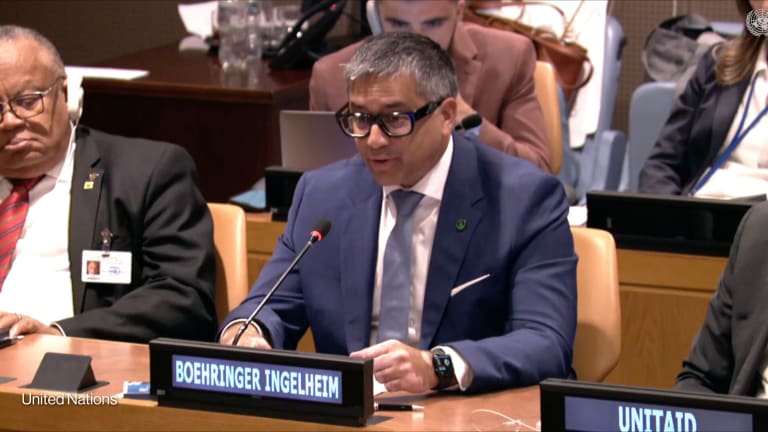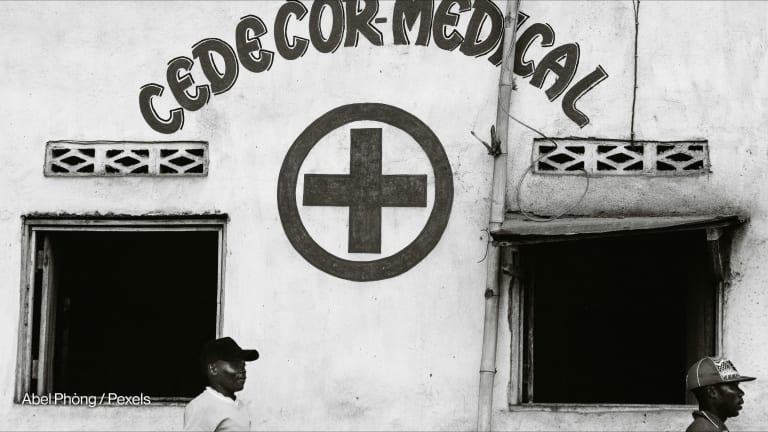
When we consider the momentous accomplishments in global health — the triumph of a polio vaccination, the eradication of smallpox, successes in containing the HIV/AIDS epidemic, and improving maternal health — the challenge of noncommunicable diseases might appear to be comparatively manageable. The risk factors are well understood and many strategies exist to mitigate them.
The NCD crisis is complex, however, having arisen from advancements in the fabric of our society. Rapid demographic shifts have resulted in an increase in levels of common, preventable risk factors, such as sedentary occupations and lifestyles, and unhealthy diets.
No person living with an NCD should die because of poor access to basic health. As a result of major gaps in the affordability and availability of basic health technologies and essential medicines in some countries, people with NCDs often delay seeking care and develop complications unnecessarily.
Many NCDs and their complications are preventable, making their high rates unacceptable. This is evident in type 2 diabetes, where up to 90 percent of cases could be prevented. Furthermore, many of the serious complications of diabetes, such as blindness and heart disease, could be avoided or delayed through earlier diagnosis and improved access to care.
“The NCD crisis is about more than access to medicine and technologies. It requires a far broader and systematic approach.”
— Lars Fruergaard Jørgensen, president and CEO, Novo NordiskAccording to the World Health Organization, a shortlist of 10 essential medicines and six basic technologies should be available in every country and at every level of the health system.
Without these, even the most basic NCD interventions cannot be implemented, and NCDs will continue to take a high toll. Yet, numerous barriers at national level, including weak supply chains, insufficient funding, inadequate health systems, overburdened regulatory structures, and conflicting national essential medicines lists, often keep these interventions beyond the reach of the people who need them.

To reduce deaths from NCDs, we urgently need to ensure that all people at risk of developing an NCD and those already living with an NCD have access to diagnosis, treatment, and care no matter where they live. This can only be achieved by working in partnership and drawing on the expertise of all stakeholders.
Scaling up action on NCDs
On Sept. 24, at the United Nations headquarters in New York, a game-changing step was taken in the fight against NCDs. The Defeat-NCD Partnership, a public-private partnership anchored in the U.N., was launched to move the dialogue on access to medicines from rhetoric to practical action.
Since world leaders adopted the 17 Sustainable Development Goals in 2015, there have been meetings, reports, and more meetings, all detailing how inaction on NCDs threatens to undermine many achievements of the SDGs. Yet one critical component has been missing: Practical action, something this partnership is set to remedy. All the while, NCDs — such as cardiovascular disease, cancer, chronic respiratory disease, and diabetes — continue to kill millions of people each year. Many of these deaths occur because people cannot access the services needed to detect and treat NCDs.

Why do I claim that the meeting in New York was a defining moment in the fight against NCDs?
In the words of Sania Nishtar, co-chair of the World Health Organization’s High-level Commission on NCDs, “the launch of The Defeat-NCD Partnership is a very important and a salient step because this is the first partnership that the world has put together to address the challenges of NCDs. There are over 100 partnerships for most infectious diseases that have been put in place over the last decade, and there was not one for NCDs.”
A key action of the partnership will be to establish an innovative online mechanism that makes the provision of essential medicines, diagnostics, and equipment simpler and more cost effective for low-resource countries. The Defeat-NCD Marketplace will leverage market dynamics, such as pooled purchasing power, to achieve lower prices, improved quality control, standardization, and quicker and more reliable distribution.
Novo Nordisk — a global health care company and leader in diabetes care — can attest to these barriers. After two decades of efforts to improve access to its medicines through a fixed maximum price, otherwise known as ceiling price, in many low-resource countries, time and time again we have seen that the benefits of these policies and programs do not always reach the patient. However, through programs such as our Base of the Pyramid project and Changing Diabetes in Children initiative, we have seen that — by working in partnership to address barriers at national level, especially those related to the supply chain — we can improve the level of care in a sustainable way.
Why a systematic approach is needed
That said, the NCD crisis is about more than access to medicine and technologies. It requires a far broader and systematic approach. In addition to The Defeat-NCD Marketplace, the partnership will work to help governments strengthen key institutions and develop practical costed action plans, increase the provision of NCD services through community action and health system strengthening, and support low-resource countries in securing financing to achieve universal health coverage.
Tackling NCDs in low-resource countries may seem like a daunting task but, by working together and exploring innovative partnerships, we can break new ground. The Defeat-NCD Partnership offers a practical mechanism that can make this happen.
Mukesh Kapila, chief executive of The Defeat-NCD Partnership, made the imperative for action very clear. “Not a single person in the world should die or be disabled from a condition that is common to our humanity and on which we have all the knowledge and capacity to address it.”
The time for action is today and not tomorrow.
For more information on The Defeat-NCD Partnership, click here.
For more coverage of NCDs, visit the Taking the Pulse series here.









